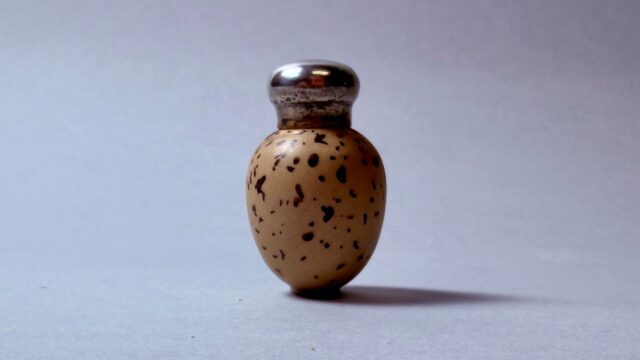Lawrence Stephen Lowry (1887 – 1976)
Lawrence Stephen Lowry (1887 – 1976) is one of the most famous names in British art and certainly the most famous artist to capture the industrial North of England. His work is as identifiable as any other British artist that I can think of.
When we think of Lowry paintings, we think of industrial landscapes encapsulating looming mills, smoking factories and massed ranks of figures, moving in all directions, with their heads bowed and relentlessly going about their way. It is almost although the artist is observing how society works wholly, he is like a young lad observing a colony of ants from above. His figures are not detailed and famously they are sometimes referred to as ‘matchstick’, but one can still see the character of these busy humans; through a subtle application of paint there are still wonderful characters, humour, sentiment and mood in his figures. This is efficiently captured through subtle variants in the shape of their bodies, mothers with their babies, workers with carts, children with sticks.
He was a very skilled taught draughtsman and portrait artist; his early life-drawing studies occasionally come on the market. But the genius of Lowry is that his trained eye evolved into something profoundly different to anything that preceded. There have been many artists who have been influenced by Lowry such as our very own Swansea boy Jack Jones as well as a stable of Northern English painters, such as John Thompson, Norman Cornish and Harold Riley. However, to identify an artist to whom Lowry may have been strongly influenced in style, theme and subject-matter is a challenge.
Lowry himself referred to Adolphe Valette, the French impressionist as his greatest influence. Valette taught Lowry at Salford School of Art and was a painter of gritty industrial scenes too. However, there is a giant departure in style from Valette’s impressionist work to Lowry’s panoramic studies of urban life. We sold a Valette oil painting this April (shown below) and you will see there are few factors in which we can identify as being like a work by Lowry.
One of the reasons for Lowry’s enduring popularity is that his paintings concern the ordinary citizen and working communities we can identify with. His market has risen sharply since his death in 1976 and since then it has been a period in British history of upward mobility of the classes. There has too been a gentrification of the urban industrial landscape in many towns - the mills and factories refitted to fashionable studios for working and living. Hanging a Lowry on one’s wall is a sure sign of having elevated from one’s working class roots. This theory exemplified by the Professional Football Association’s acquisition of Lowry’s ‘Going to the Match’ for £2.9 million. Football was once a sport for low paid amateurs and watched by the masses paying shillings at the turnstiles. Times have changed - the ‘people’s game’ has gone corporate and is splashing out on British record signings in art-form. The auction record for a Lowry painting now stands at £5.6m.
Our auction house cannot boast too many sales of Lowry paintings - we have in fact only sold two oils in our 28 years. The million-pound Lowry paintings are now mainly in the hands of investors, high-end collectors, museums and organisations. Not that we could not provide the service required should you have one in your kitchen (please do call us)! In March 2019 however, we did have the privilege of handling a very small Lowry oil painting from a Cardiff estate. ‘Teenage Group’ at only 19 x 12cms had been valued for probate by Sotheby’s for £40,000 (based on their estimated market value). We were delighted to receive the instructions to sell the little gem. It realised £65,000 and thus exceeding the London valuation by some margin. The vendor was attracted by our competitive commission rates, our international reputation and above all the overall efficiency and expediency of entering the item into a prestigious auction.
The discovery of such a little Lowry oil painting at an auction house is uncommon, but we have sold many of L S Lowry’s signed prints and these too have risen in value sharply and on occasions rare prints have made more than Lowry’s pencil drawings. Considering that Lowry’s original paintings now come to the market infrequently and considering the out-of-reach prices they can fetch; Lowry’s prints are a great investment for collectors as well as being a more affordable entry into the Lowry market.
If you are thinking of becoming a first-time buyer of a Lowry print, or if you think you may have a Lowry print which you are considering selling, then it needs to be checked that it is an authentic print. Most of these feature a ‘blind stamp’ which is an image with lettering, formed by creating a depression in the paper. Normally Lowry prints are stamped on the left, below the image and usually but not always, the stamp on Lowry prints is by the Fine Art Guild with a depiction of an Elizabethan style gentleman holding a manuscript within a rectangular box and followed by three letters ‘F.A.G’. The more collectable Lowry prints will be signed, and this will be usually in pencil on the right of the image.
Various galleries and organisations promoted and published Lowry prints including Adam Collection and Venture Prints Ltd but they did not print them. The printing was done by a handful of printing houses with The Curwen Press prints being the most populous, the information about the print-house is not found on the print.
The value of the print depends on several factors including the composition of course, but also the number of editions that were released for that example. Some of Lowry’s pictures had very short print runs of only 75 editions and these of course are rare and can be very valuable.
If you are considering a purchase or already own a Lowry print, then authenticity is hugely important. It is also vital that you do not hang the prints in direct light as this can cause fading quickly and will knock the value down.
If you would like to see some spectacularly iconic Lowry oil paintings, then the collection at The Lowry Gallery in Salford is unsurpassed and a manageable distance for our North Wales clients. In South Wales, the National Museum of Wales in Cardiff hold four paintings in the Derek Williams collection and ‘Six Bells, Abertillery’ - a huge oil, is on permanent display. In Swansea, The Glynn Vivian Art Gallery have ‘Hillside in Wales, 1962’ on permanent display. Tate Britain and Tate Liverpool also have some fine examples.
Below are some of the signed prints that we have sold in the last few years and as you can see by the captions, they are commanding strong prices.
Should you wish to have a Lowry valued or authenticated – a print or original, then we would be pleased to assess the work without obligation, and this can be done remotely with images. It is a great time to offer his work to the market, particularly following the extra attention that the recent biographical film ‘Mrs Lowry & Son’ has brought to his work.
We offer the same free service for all art – whether it be Welsh, British, Continental or Asian. Our team have the expertise to help.
























